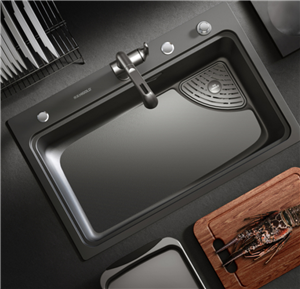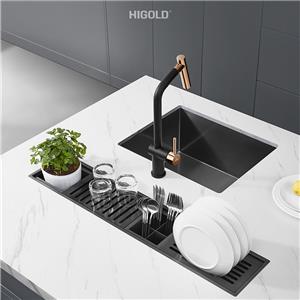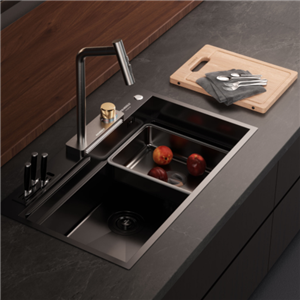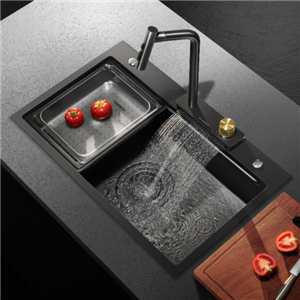What is the standard setback for kitchen undermount sinks?
In modern kitchen decoration, sinks are an indispensable core device, and their design and installation quality directly affect the kitchen experience. Kitchen undermount sinks have gradually become the first choice for many families and commercial kitchens due to their simple, modern appearance and easy-to-clean features. Unlike traditional countertop sinks, kitchen undermount sinks install the sink directly under the kitchen countertop, and the edge of the sink is flush with the countertop, creating a smooth visual effect. However, this design requires precise installation standards to ensure that the connection between the undermount sink and the countertop is both stable and beautiful.
Among them, a key design parameter for kitchen undermount sinks is "reveal". The setback refers to the distance between the countertop and the edge of the sink. It not only determines the visual effect of the sink, but also affects the installation quality and subsequent maintenance of the sink. In the installation process of kitchen undermount sinks, the standard setting of the setback is crucial. If the setback is not appropriate, it may cause the sink to be installed unstably, water seepage, and even easy wear of the sink edge. Therefore, understanding and complying with the standard setback is essential to ensure the long-term stability and aesthetics of the kitchen undermount sink.
This article will explore the standard setback of kitchen undermount sinks in detail, analyze its impact on sink installation and use, and provide some suggestions on how to choose the appropriate setback to help consumers and designers make scientific and reasonable decisions in the actual decoration process.
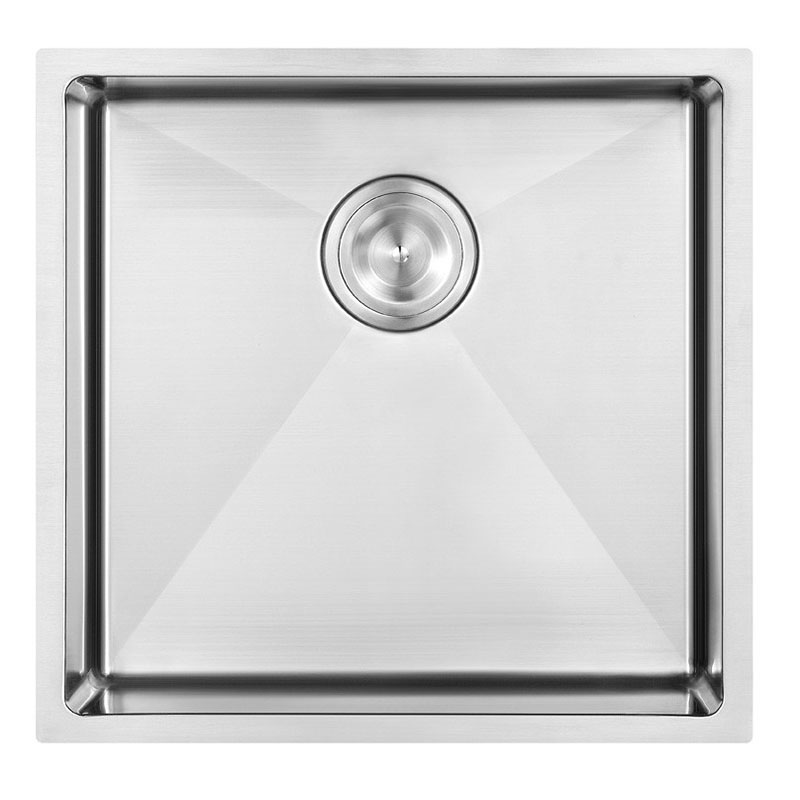
What is the setback of a kitchen undermount sink?
Reveal refers to the distance between the countertop and the edge of the sink. Specifically, in the installation of a kitchen undermount sink, the upper edge (or edge) of the sink is usually slightly lower than the countertop surface, and this lower distance is the setback. The size of the setback directly affects the connection between the sink and the countertop and the visibility of the sink edge.
The setback is usually measured in millimeters, and the most common setback is between 3mm and 6mm. If the setback is too small, the connection between the sink and the countertop may not appear tight enough, and may even cause a visible gap on the edge of the sink; if the setback is too large, it may affect the aesthetics of the sink and even cause an unstable installation between the sink and the countertop.
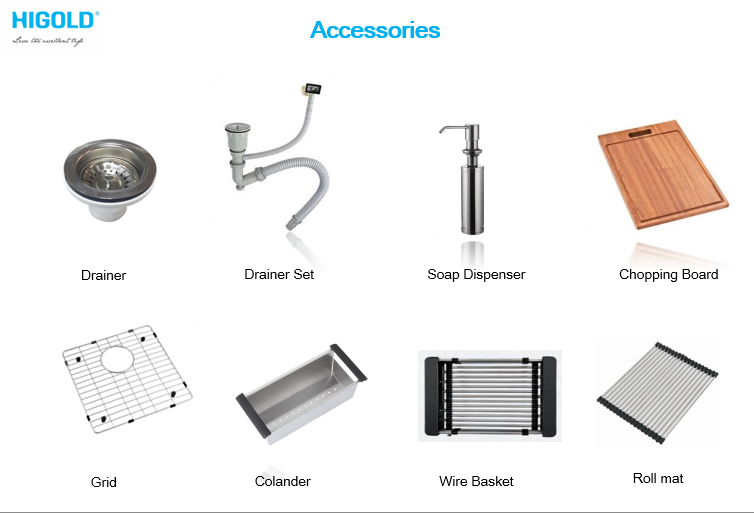
What is the standard setback for kitchen undermount sinks?
There is no strict and unified international standard for the setback of kitchen undermount sinks, but in the industry, there are several more common standard sizes for designers and installers to refer to.
● 3mm setback: This setback is usually used for more standard kitchen undermount sink installations, especially in some high-end custom kitchens, where designers will choose a smaller setback to minimize the gap between the sink and the countertop and improve the overall aesthetics of the sink. The 3mm setback makes the edge of the sink almost flush with the countertop surface, giving a very neat and seamless feeling.
● 4mm setback: 4mm setback is one of the most common standards at present and is widely used in most home and commercial kitchens. This size of setback can ensure that the gap between the undermount sink and the countertop is moderate, while also avoiding the situation where the edge of the sink is too protruding. It is a choice that strikes a balance between beauty and functionality.
● 6mm setback: 6mm setback is common in some kitchen undermount sinks with special designs or that require stronger support. This large setback can provide more installation support for the sink and ensure the stability of the sink, especially in the installation of large-sized sinks or deep sinks. In addition, the 6mm setback design also helps prevent water from splashing out of the sink and entering the gap in the countertop.
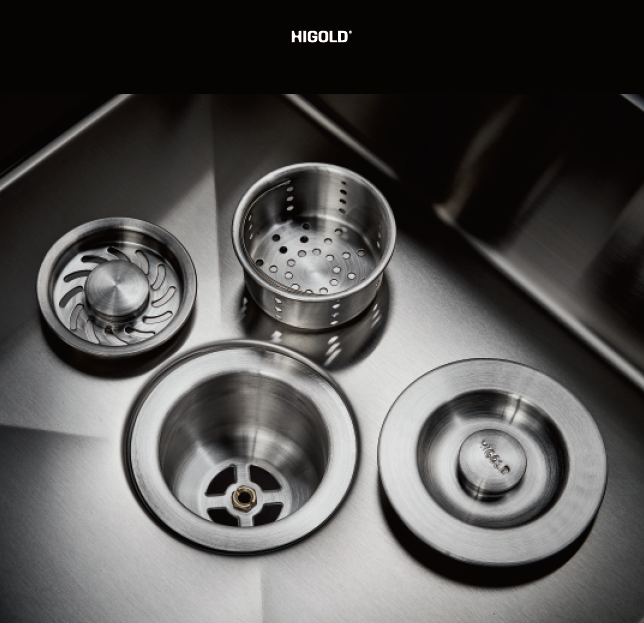
What impact does the setback have on the installation of kitchen undermount sinks?
The setback of a kitchen undermount sink is not just an appearance design detail, it is directly related to the installation quality, service life and later maintenance of the sink. A reasonable setback can ensure that the sink is installed firmly and is easy to clean, while an inappropriate setback may cause a series of problems. Specifically, the design of the setback will affect the following aspects:
● The connection effect between the sink and the countertop: Too much or too little setback will affect the connection effect between the kitchen undermount sink and the countertop. If the setback is too large, the edge of the sink will appear abrupt, and may even cause an unsightly part under the sink to be exposed; if the setback is too small, an irregular gap may form between the undermount sink and the countertop, affecting the overall aesthetics.
● Prevent water leakage: A reasonable setback can help the sink effectively avoid water leakage. Especially after the sink has been used for a long time, water is prone to accumulate at the joint between the countertop and the sink. If the setback is not enough, water may seep between the sink and the countertop, causing leakage and water damage. A design with too much setback can reduce the risk of water leakage.
● Stability and load-bearing capacity of the sink: The stability of the kitchen undermount sink is also closely related to the setback. When the setback is large, the contact area between the sink and the countertop increases, which can provide better support and prevent the sink from loosening or deforming due to long-term use. Especially in the installation of large-sized and heavy sinks, the appropriate setback can effectively enhance the stability of the sink.
● Ease of cleaning and maintenance: One of the outstanding advantages of kitchen undermount sinks is that they are easy to clean, because there is no protrusion on the countertop, and the water can slide directly from the countertop into the sink. Reasonable setback can ensure that there is no water, oil stains and dirt between the edge of the undermount sink and the countertop, making it easier to clean. If the setback is too large or too small, it may cause a gap between the sink and the countertop that is difficult to clean and accumulate stains.
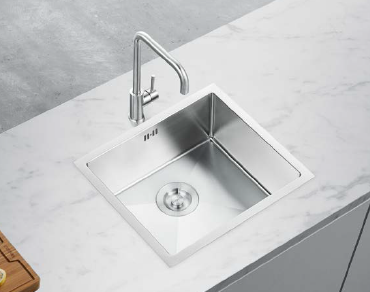
How to choose the right setback?
Choosing the right setback is not a simple matter. It requires precise design and adjustment according to the specific situation. When consumers choose a kitchen undermount sink, they usually need to consider the following factors:
● Materials of the sink and countertop: Different sink materials and countertop materials require different setbacks. For example, natural stone countertops such as marble and granite often require a slightly larger setback because these materials may leave tiny flaws and irregular edges when cut, and a slightly larger setback can effectively cover these defects. In contrast, stainless steel countertops are relatively flat and can use a smaller setback.
● Sink size and depth: For larger or deeper sinks, especially those in commercial kitchens, a larger setback (such as 6mm) is usually required. This not only helps to improve the stability of the sink, but also ensures the load-bearing capacity of the sink edge. For smaller household sinks, a smaller setback (such as 3mm or 4mm) can meet the needs and maintain beauty and convenience of cleaning.
● Countertop and sink design style: The design style of the kitchen undermount sink and countertop is also an important factor affecting the choice of setback. Modern minimalist style kitchens usually prefer smaller setbacks, giving a more refined and simple visual effect, while traditional style kitchens may require a slightly larger setback to enhance the layering and stability of the design.
● Actual use requirements: If the kitchen is frequently used, especially if it needs to withstand large water flow and heavy pressure for a long time, choosing a larger setback can improve the stability and service life of the kitchen undermount sink. For some lightly used home kitchens, a smaller setback may be more in line with the needs, which can maintain beauty and reduce construction complexity.

